
Institutional

Internal QA System

Education, Research and Service

Institutional

Internal QA System

Education, Research and Service
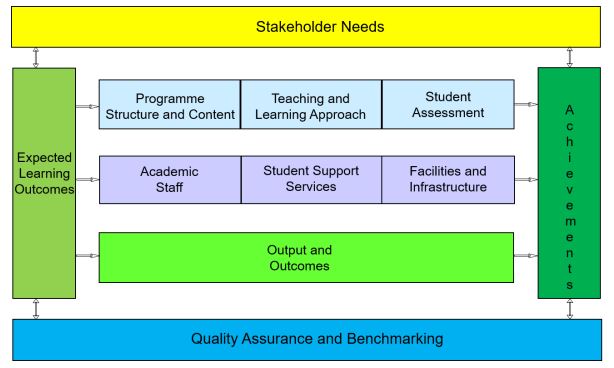
Maintaining a healthy lifestyle is challenging at any age, and for adults 50 and over, one of the best ways to combat the symptoms of “old age” is to be educated about ways to stay healthy.
Version 4.0 of the AUN-QA model for programme level assessment encompasses the following eight criteria
1. Expected Learning Outcomes
2. Programme Structure and Content
3. Teaching and Learning Approach
4. Student Assessment
5. Academic Staff
6. Student Support Services
7. Facilities and Infrastructure
8. Output and Outcomes.
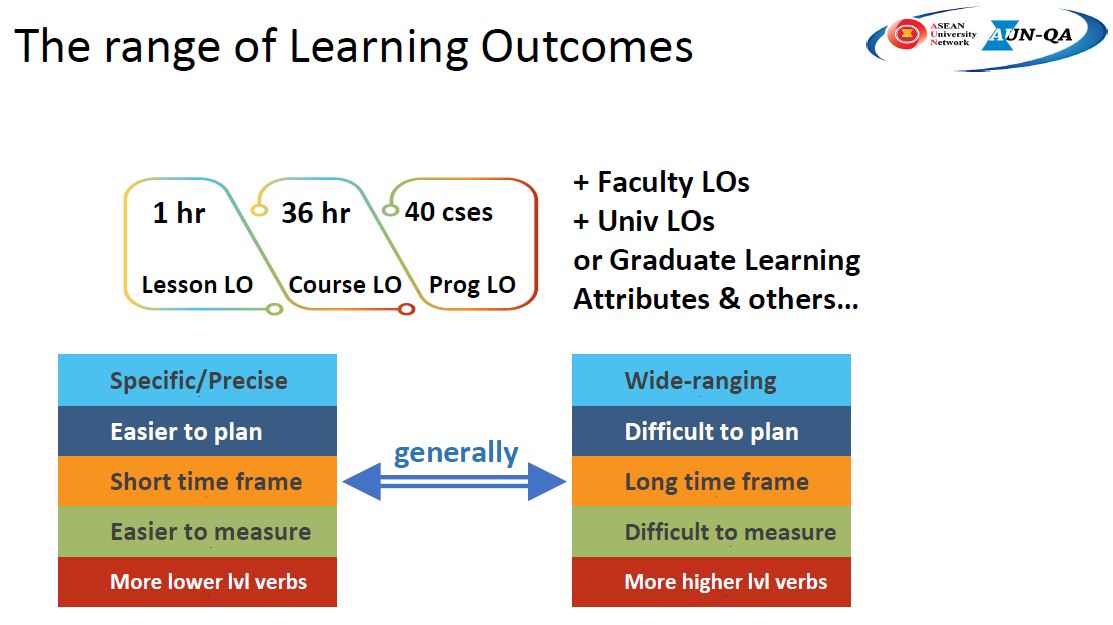
A full physical examination is a general examination of the body performed by the doctor or general practitioner (GP).
Expected Learning Outcomes
Sources of Evidence
- Programme and course specifications
- Course brochure, prospectus, bulletin
- Skills matrix
- Stakeholder input
- University and faculty websites
- Curriculum review minutes and documents
- Accreditation and benchmarking reports.
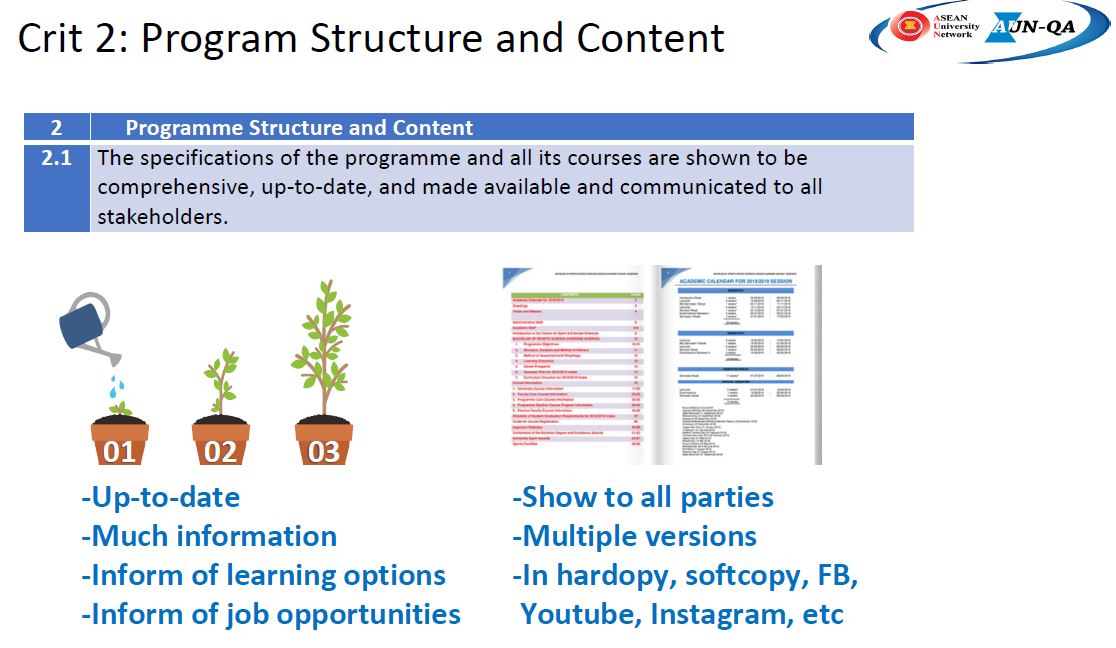
Child Health care is defined as the medical services that are provided by the medical professionals to the children having disease or infection.
Programme Structure and Content
Sources of Evidence
- Programme and courses specifications
- Course brochure, prospectus, bulletin
- Skills matrix
- Stakeholder input and feedback
- University and faculty websites
- Curriculum review minutes and documents
- Accreditation and benchmarking reports
- Curriculum map
- Curriculum review minutes and documents
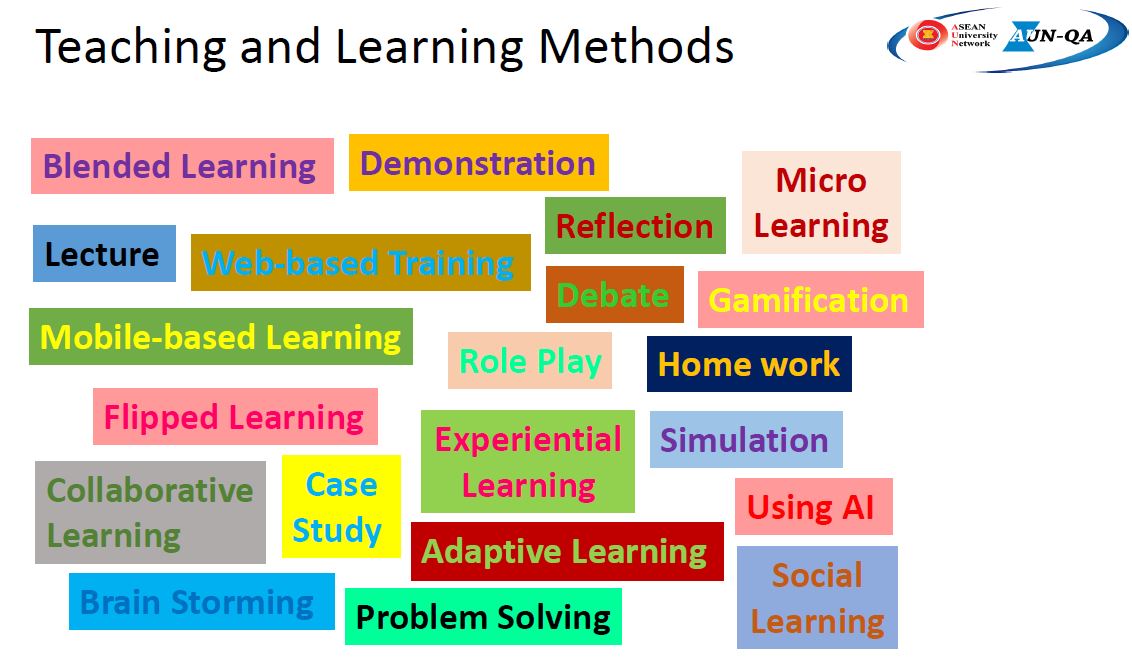
Child Health care is defined as the medical services that are provided by the medical professionals to the children having disease or infection.
Teaching and Learning Approach
Sources of Evidence
- Educational philosophy
- Evidence of action learning such as project, practical training, assignment,
industrial attachment, etc
- Student feedback
- Online learning portal
- Programme and courses specifications
- Internship reports
- Community involvement
- Memorandum of Understanding (MOU).
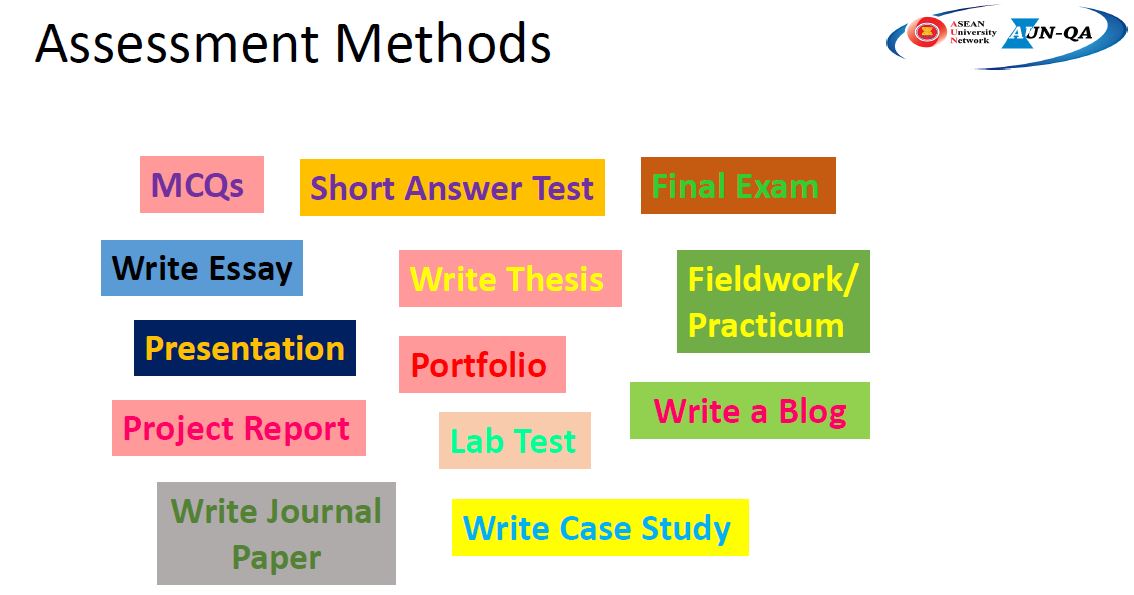
Student Assessment
Sources of Evidence
- Sample of in-course assessment, project work, thesis, final examination, etc
- Assessment/Marking rubrics
- Moderation process
- Appeal procedure
- Programme and courses specifications
- Examination regulations.
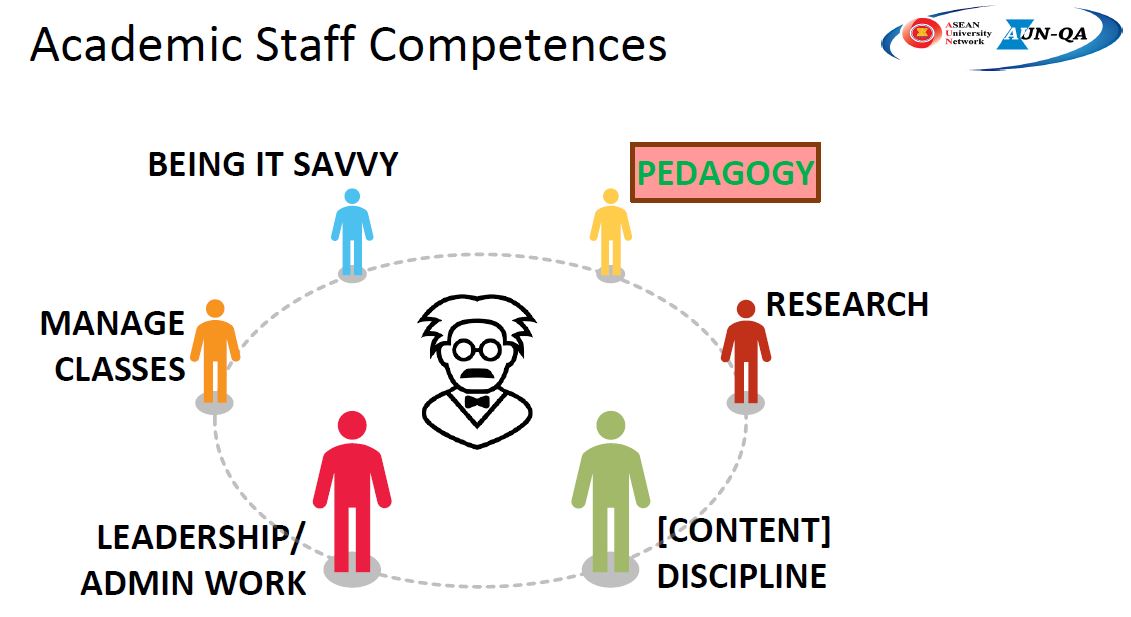
Academic Staff
Sources of Evidence
- Manpower plan
- Faculty distribution in terms of age, gender, expertise, etc
- Career and succession plans
- Recruitment criteria
- Staff qualifications
- Training needs analysis
- Training and development plan and budget
- Peer review and appraisal system
- Student feedback
- Award and recognition schemes
- Staff workload
- Organisation chart
- HR policies
- Staff handbook
- Job description
- Employment contract
- Research and publication data
- National and/or professional licence/certificate.
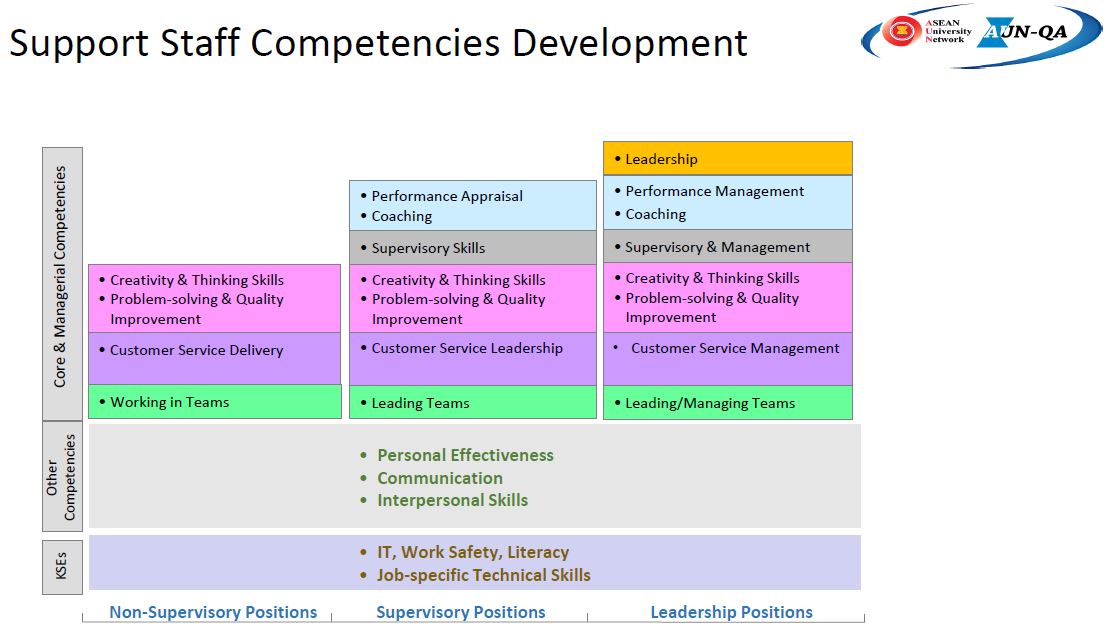
Student Support Services
Sources of Evidence
- Student selection process and criteria
- Trend of student intake
- Credit system
- Student workload
- Student performance report
- Participation in academic and non-academic activities, extracurricular activities,
competition, etc
- Mechanisms to report and feedback on student progress
- Provision of student support services at university- and faculty-level
- Coaching, mentoring, and counselling schemes
- Student feedback and course evaluation
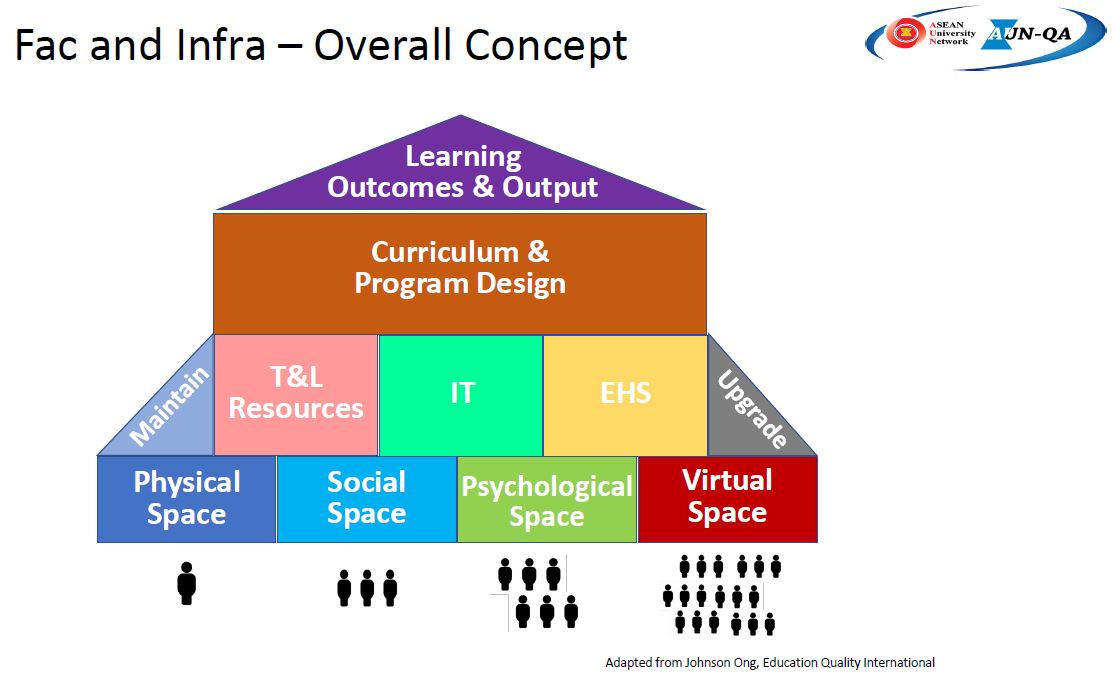
Facilities and Infrastructure
Sources of Evidence
- List of facilities, equipment, computer hardware and software, etc
- Facility booking, utilisation rate, downtime/uptime, operating hours
- Maintenance plan
- New facilities and upgrading plans
- Safety, health, and environmental policy
- Emergency plan
- Student and staff feedback
- Budget for facilities and infrastructure
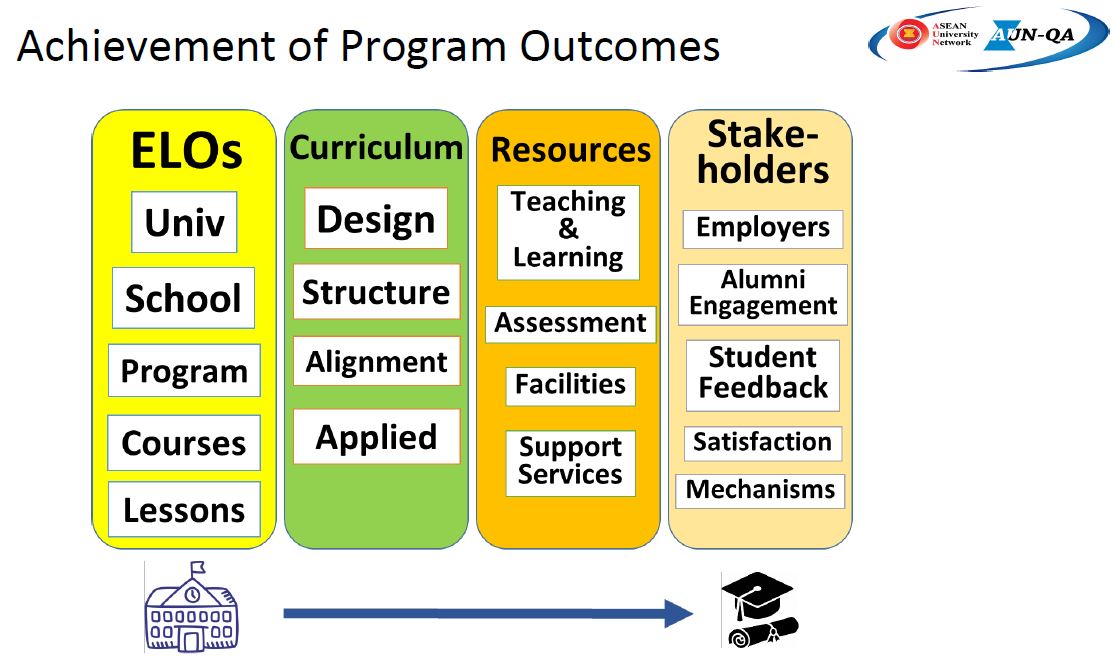
Output and Outcomes
Sources of Evidence
- Process and indicators for measuring stakeholder satisfaction
- Stakeholder satisfaction trend
- Graduates, alumni, and employer surveys
- Press reports
- Employment surveys
- Employment statistics
- Employer feedback.